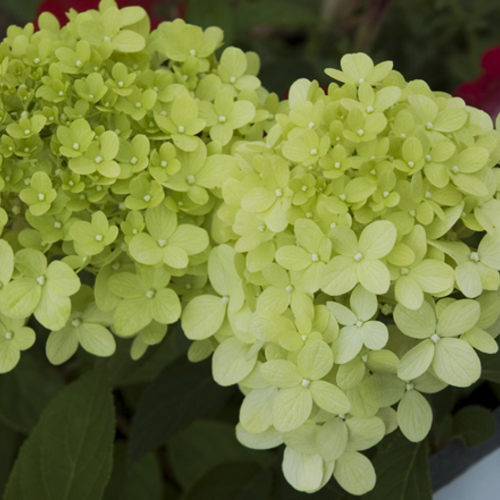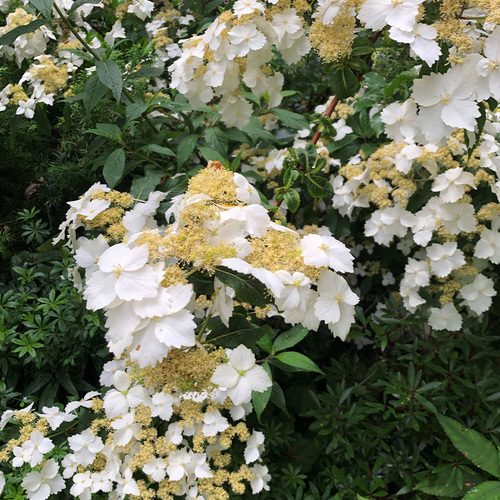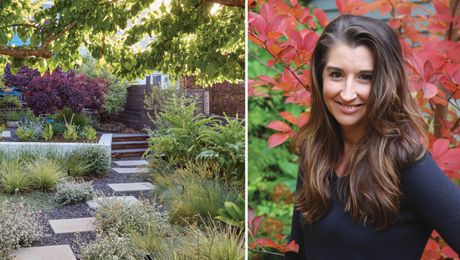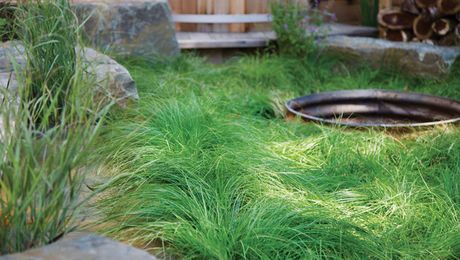
There is perhaps no more iconic flower than the hydrangea. Whether it’s the massive blossoms of the bigleaf varieties (Hydrangea macrophylla and cvs., Zones 5–9) or the interesting star-shaped blooms of the mountain types (H. serrata and cvs., Zones 6–9), hydrangeas add drama to the garden like no other plant.
Not all hydrangeas are built the same, however. Some flower only on old wood, so their buds are susceptible to early frosts. I can’t even estimate how many times I’ve been asked throughout my career in horticulture, “Why hasn’t my hydrangea bloomed?” Most times the answer is that the flower buds on the old wood have been damaged by cold snaps or pruned away inadvertently.
Thankfully, not all hydrangeas blossom from old wood. Smooth hydrangea (Hydrangea arborescens and cvs., Zones 3–9) and panicle hydrangea (H. paniculata and cvs., Zones 3–9) both flower off new wood, so no amount of chilly spring weather or heavy-handed pruning will prevent them from putting on a show.
Oakleaf hydrangeas (H. quercifolia and cvs., Zones 3–9), which flower on old wood along with some bigleaf and mountain types, tend to be planted more for their foliage than for their flowers (although their blossoms are still impressive). The large, lobed leaves are rough to the touch and seem almost tropical, though these shrubs are native to the southeastern United States.
Not all hydrangeas grow into shrubby mounds either. There are climbing hydrangeas (Hydrangea anomala subsp. petiolaris and cvs., Zones 4–8) that scale walls brilliantly and sport flowers similar to those of a mountain hydrangea, albeit on a larger scale. Looking for an impressive vine for shade? Look no further than climbing hydrangea.
In this collection you will find a hydrangea that suits nearly every condition. There are options for sun and shade, hydrangeas that get 12 feet tall, and ones that top off at only 2 feet. There are options for cooler zones and ones for areas of the country that are blazing hot for most of the year. If you can’t find a hydrangea that’s the perfect fit for your garden in these articles, you might not be looking hard enough.
-
 Design
DesignThe Best New Hydrangeas
The following are a few recent hydrangea varieties that have wowed us here at Fine Gardening. -
 Genus
GenusHydrangea
These shrubs from the Americas and East Asia provide gardeners with a rich source of plants for understory, mixed border, foundation, and specimen planting. -
 Design
DesignThe Smarter Hydrangea
This species sleeps past the danger of late frost, so it always blooms on time. -
 Design
DesignThe Best Panicle Hydrangeas
Find out which panicle varieties are so amazing you'll never want to plant a bigleaf type again. -
 Podcast: Let's Argue About Plants
Podcast: Let's Argue About PlantsEpisode 12: Hydrangeas with High Marks
There are a million kinds of hydrangea out there—some good, some not. We highlight a handful of proven performers. -
 Article
ArticleA New Hydrangea That’s Little in Stature–Not Impact
If you’re a fan of ‘Limelight’ panicle hydrangea (Hydrangea paniculata ‘Limelight’, Zones 3–9)—and who isn’t—this new cutie might be your new favorite. -
 Design
DesignGrow This Hydrangea for Its Foliage—and Its Ability to Climb
‘Miranda’ is a beautiful two-tone clinging vine that attaches to rough, solid surfaces such as brick or wood by means of little rootlike holdfasts. -
 Pacific Northwest Regional Reports
Pacific Northwest Regional ReportsUnique Dwarf Hydrangeas for the Northwest
These unusual beauties demand attention and prime placement despite their small stature. -
 Southeast Regional Reports
Southeast Regional ReportsSerrata vs. Macrophylla for Southeast Gardeners
Mountain hydrangeas are easier to grow, require lower maintenance, and bloom better in the southeastern United States. -
 Southwest Regional Reports
Southwest Regional ReportsGrowing Hydrangeas in the Southern Plains
In this hot and dry climate, proper selection and placement are the keys to better performance. -
 Design
DesignDesigning With Hydrangeas
With so many different forms and habits, hydrangeas are one of the most versatile shrubs to work into a landscape.













